Best Credit Cards in Canada for 2024
- Overall
- Rewards
- Cash Back
- Balance Transfer
- No Annual Fee
- Low Interest
- Grocery
- Gas
- Travel
- Welcome Bonus
- Student
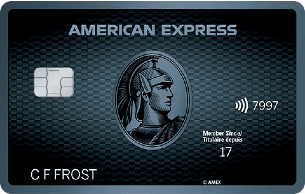
4.9
Best credit card in Canada overall: American Express Cobalt
The American Express Cobalt is above average for almost all categories and has a high earn rate with a low annual fee.
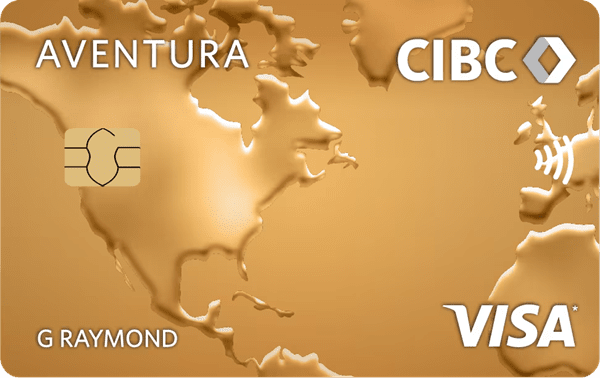
CIBC Aventura® Gold Visa* Card
4.9
CIBC Aventura® Gold Visa* Card
4.9
Unlock a world of rewards and travel possibilities with a card designed for your lifestyle (and minimum income requirements)

BMO CashBack® World Elite®* Mastercard®*
4.9
BMO CashBack® World Elite®* Mastercard®*
4.9
Offers high cashback on groceries, transit and gas, plus travel perks and insurance, with a modest annual fee.
Why the Amex Cobalt wins best overall credit card in Canada
- Well-above-average scores on most metrics
- Good points earn rates in a variety of categories
- High versatility of points
The Amex Cobalt is perfect for those with varied spending habits; in other words, most people. Rewards are outlined in detail in the next section.

 High earn rate
High earn rate
- Earn 5x points on eligible dining and groceries in Canada
- Earn 3x points on eligible streaming subscriptions in Canada (e.g., Apple TV+, Crave, Disney+, Netflix, Spotify)
- Earn 2x points on eligible rideshares, transit and gas in Canada
- 1x the points on everything else
 Comprehensive insurance
Comprehensive insurance
- Includes emergency medical, travel accident, flight delay, lost luggage, hotel burglary, rental car insurance and more
- Mobile device insurance up to $1,000 for theft, loss or accidental damage, provided the phone was purchased within 2 years from the date of the incident
 Travel perks
Travel perks
- Although it has a high earn rate for travel points, it lacks key travel perks like airport lounge access, no foreign exchange fees and priority treatment at airports
 High acceptance rate
High acceptance rate
- Fair recommended credit score
- $0 required annual personal income
- $0 required annual household income
 Fees
Fees
- Annual fee: $155.88 (billed as $12.99/month)
- Foreign transaction fee: 2.5% of the transaction in CDN
 APR
APR
- Purchase APR: 21.99%
- Cash advance APR: 21.99%
 Disclosures
Disclosures
Contact American Express for the most up-to-date referral bonus figures.
American Express is not responsible for maintaining or monitoring the accuracy of information on this website. For full details and current product information, click the Apply Now link. If you apply and get approved for an American Express Card, (I/we) may receive compensation from American Express, which can be in the form of monetary payment.

CIBC Aventura® Gold Visa* Card
4.9
CIBC Aventura® Gold Visa* Card
4.9
Unlock a world of rewards and travel possibilities with a card designed for your lifestyle (and minimum income requirements)
- Overall
- Rewards
- Cash Back
- Balance Transfer
- No Annual Fee
- Low Interest
- Grocery
- Gas
- Travel
- Welcome Bonus
- Student
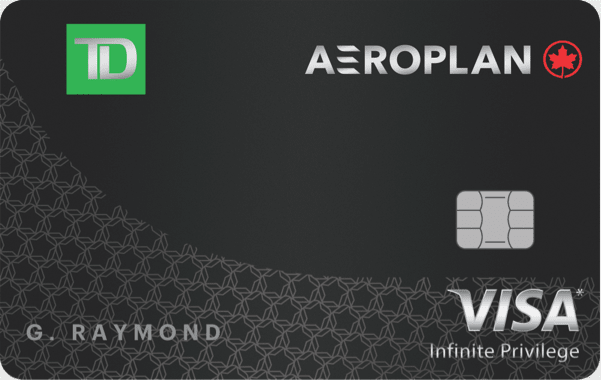
4.0
Best credit card for rewards: TD® Aeroplan® Visa Infinite Privilege
Huge first-year value, premium travel benefits and exclusive lounge access.
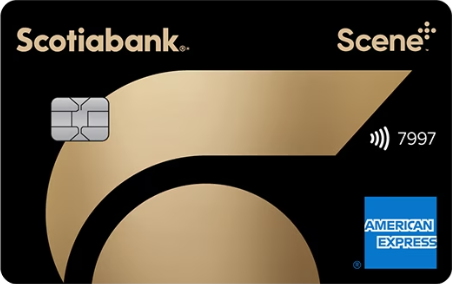
Scotiabank Gold American Express®
4.8
Scotiabank Gold American Express®
4.8
Earn more on groceries, dining, and entertainment with no foreign transaction fees.

American Express Cobalt® Card
4.9
American Express Cobalt® Card
4.9
One of Canada's best credit cards with high earn rates and flexible rewards.
Why it wins for best rewards card

 Impressive earn rates
Impressive earn rates
- Earn 2 points† for every $1 spent on eligible purchases made direct through Air Canada® purchases (including Air Canada Vacations®)
- Earn 1.5 points† for every $1 spent on eligible gas, grocery, travel and dining purchases
- Earn 1.25 points† for every $1 spent on all other purchases made with your Card
- Earn points twice when you pay with your Card and provide your Aeroplan number at over 150 Aeroplan partner brands and at 170+ online retailers via the Aeroplan eStore (www.aeroplan.com/estore)
 Comprehensive insurance
Comprehensive insurance
- Includes travel medical, travel accident, trip cancellation/interruption, lost/stolen baggage, hotel and rental car insurance
 Travel perks
Travel perks
- Enroll for NEXUS and once every 48 months get an application fee rebate† (up to $100 value)
- Free checked bags on Air Canada
- Preferred Pricing on Aeroplan® flight rewards
- Priority Airport Services† like Boarding and Baggage Handling
- Complimentary Maple Leaf Lounges† access and 6 worldwide lounge visits annually†
 Fees
Fees
- Annual fee: $599 (Additional Cardholder† $199)
- Foreign transaction fee: 2.5% of the transaction in CND
 APR
APR
- Purchase APR: 20.99
- Cash advance APR: 22.99
 Disclosures
Disclosures
This offer is not available for residents of Quebec. For Quebec residents, please click here.
The Toronto-Dominion Bank (TD) is not responsible for the contents of this site including any editorials or reviews that may appear on this site. For complete and current information on any TD product, please click the Apply Now button. Sponsored Content.
†Terms and conditions apply.

Scotiabank Gold American Express®
4.8
Scotiabank Gold American Express®
4.8
Earn more on groceries, dining, and entertainment with no foreign transaction fees.
- Overall
- Rewards
- Cash Back
- Balance Transfer
- No Annual Fee
- Low Interest
- Grocery
- Gas
- Travel
- Welcome Bonus
- Student
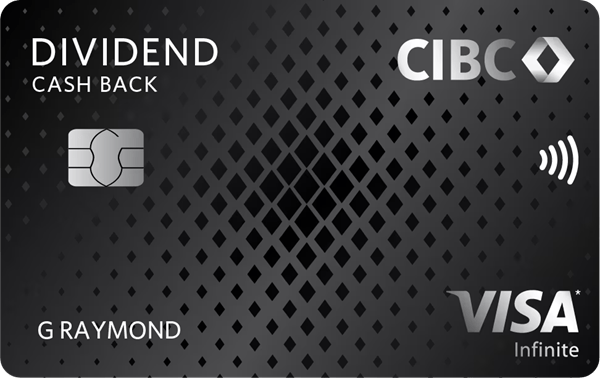
4.1
Best credit card for cash back: CIBC Dividend® Visa Infinite* Card
Reliable cash back, valuable insurance, no annual fee.

BMO CashBack® World Elite®* Mastercard®*
4.9
BMO CashBack® World Elite®* Mastercard®*
4.9
Offers high cashback on groceries, transit and gas, plus travel perks and insurance, with a modest annual fee.
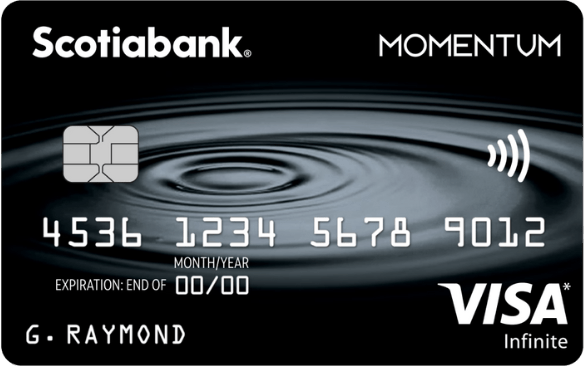
Scotiabank Momentum® Visa Infinite
5.0
Scotiabank Momentum® Visa Infinite
5.0
Why it wins for best cash back card
- High earn rate: Earn 4% cash back on eligible gas, EV charging, and grocery purchases†
- Cash back on everyday spend: Earn 2% cash back on eligible transportation, dining purchases and recurring payments†
- Comprehensive Insurance: Includes travel and purchase protection, out-of-province medical insurance, and auto rental collision/loss damage coverage
If we could build the ideal no annual fee cash back rewards card, it would pretty much look like this.

 Impressive cash back earn rates
Impressive cash back earn rates
- Earn 4% cash back on eligible gas, EV charging, and grocery purchases†
- Earn 2% cash back on eligible transportation, dining purchases and recurring payments†
- Earn 1% cash back on all other purchases†
 Comprehensive insurance
Comprehensive insurance
- Enjoy peace of mind with travel and purchase protection, out-of-province medical insurance, and auto rental collision/loss damage coverage
 Fees
Fees
- Annual fee: $120 (First year rebated. Each additional card is $30 per year, max 3.)
 APR
APR
- Purchase APR: 20.99% (non-Quebec residents†)
- Balance transfer APR: 22.99% (non-Quebec residents†)
- Cash advance APR: 22.99% (non-Quebec residents†)
 Disclosures
Disclosures
The information for the CIBC Dividend® Visa Infinite* Card has been collected independently by Money.ca. The card details on this page have not been reviewed or provided by the card issuer.

BMO CashBack® World Elite®* Mastercard®*
4.9
BMO CashBack® World Elite®* Mastercard®*
4.9
Offers high cashback on groceries, transit and gas, plus travel perks and insurance, with a modest annual fee.
- Overall
- Rewards
- Cash Back
- Balance Transfer
- No Annual Fee
- Low Interest
- Grocery
- Gas
- Travel
- Welcome Bonus
- Student
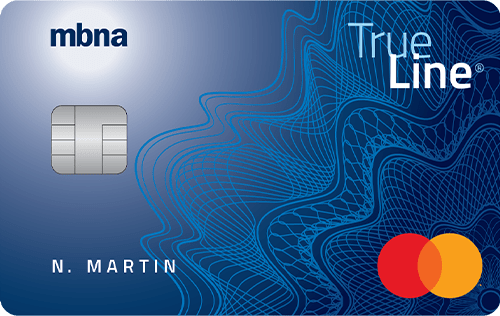
3.0
Best credit card for balance transfers: MBNA True Line Mastercard
A lengthy 0% intro APR on transfers, a great rate after that, no annual fee
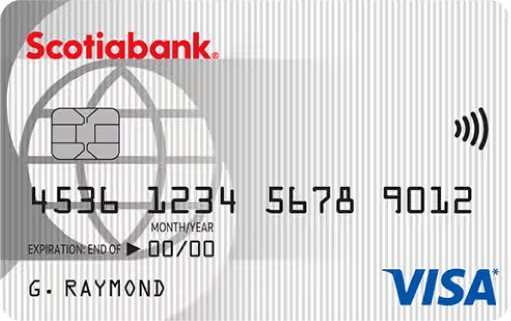
Scotiabank Value® Visa* Card
4.0
Scotiabank Value® Visa* Card
4.0
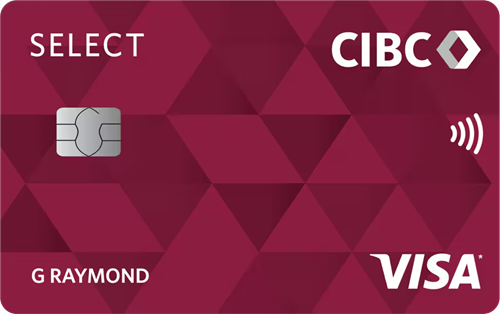
CIBC Select Visa* Card
2.9
CIBC Select Visa* Card
2.9
One of Canada’s best low interest credit cards with a great balance transfer offer.
Why it wins for best balance transfer card
- No annual fee
- 0% APR for 12 months on transfers
If you're looking for a new balance transfer card, the True Line is a great bet. The lengthy introductory APR and low APR on purchases are significantly lower than those of other credit cards. Add in no annual fee, and you've got the recipe to pay down debt fast.

 Lengthy intro APR on transfers
Lengthy intro APR on transfers
- 0% APR for 12 months on balance transfers completed within 90 days of account opening
- 3% of the balance transferred
 Essential insurance
Essential insurance
- Extended warranty and purchase protection coverage, Mastercard zero liability
 Fees
Fees
- Annual fee: $0
- Foreign transaction fee: 2.5% of the transaction in CDN
- Balance transfer fee: 3% of the balance transferred
 APR
APR
- Purchase APR: 12.99%
- Intro balance transfer APR:
- Balance transfer APR: 17.99%
- Cash advance APR: 24.99%
 Disclosures
Disclosures
†, ✪, Terms and Conditions apply.
This offer is not available for residents of Quebec. For residents of Quebec, please click here.
Sponsored advertising. MBNA is a division of The Toronto-Dominion Bank (TD) and TD is not responsible for the contents of this site including any editorials or reviews that may appear on this site. For complete information on this MBNA credit card, please click on the “Apply Now” button.
The Toronto-Dominion Bank is the issuer of this credit card. MBNA is a division of The Toronto-Dominion Bank. ®MBNA and other-trademarks are the property of The Toronto-Dominion Bank.
- Overall
- Rewards
- Cash Back
- Balance Transfer
- No Annual Fee
- Low Interest
- Grocery
- Gas
- Travel
- Welcome Bonus
- Student
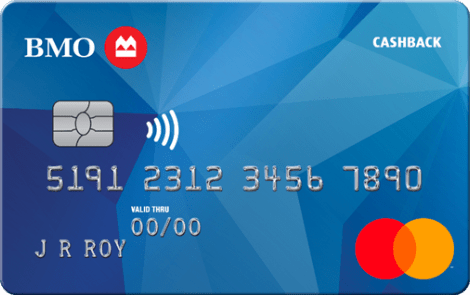
3.4
Best credit card with no annual fee: BMO CashBack® MasterCard®*
No annual fee, generous cash back, intro APR on balance transfers.
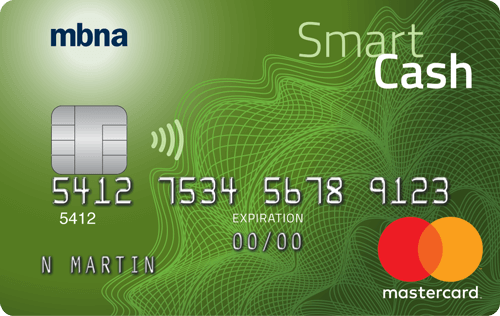
MBNA Smart Cash Platinum Plus Mastercard
2.6
MBNA Smart Cash Platinum Plus Mastercard
2.6
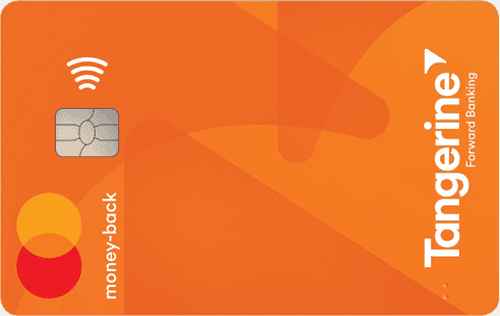
Tangerine Money-Back Credit Card
4.0
Tangerine Money-Back Credit Card
4.0
A no annual fee 2% cash back card personalized to your shopping habits.
Why it wins for best no annual fee card
- Generous cash back
- Lucrative welcome bonus
- Balance transfer offer
- No annual fee
All told, the BMO CashBack® MasterCard®* is definitely worth it for those look for a no annual fee credit card with low income requirements.

 No annual fee
No annual fee
- $0 annual fee means you don't have to pay to access up to 3% cash back.
 Intro APR
Intro APR
- Get 0.99% introductory interest rate on Balance Transfers for 9 months with a 2% transfer fee.§§
 Rewards
Rewards
- Earn 3% (up to a monthly max of $500) cash back on groceries.
- Earn 1% (up to $500 per month) on any recurring bill payments*.
- Earn 0.50% cash back on all other purchases.
 Rental car discounts
Rental car discounts
- Save up to 20% on National Car Rental®†† and Alamo Rent A Car®†† and up to 5% on Enterprise Rent-A-Car®†† at locations worldwide using BMO's Car Rental Booking tool.
 Fees
Fees
- Annual fee: $0
 APR
APR
- Purchase APR: 20.99%
- Intro balance transfer APR: Get 0.99% introductory interest rate on Balance Transfers for 9 months with a 2% transfer fee.§§
- Balance transfer APR: 22.99%
- Cash advance APR: 22.99% (21.99% for Quebec residents)
 Disclosures
Disclosures
- Overall
- Rewards
- Cash Back
- Balance Transfer
- No Annual Fee
- Low Interest
- Grocery
- Gas
- Travel
- Welcome Bonus
- Student
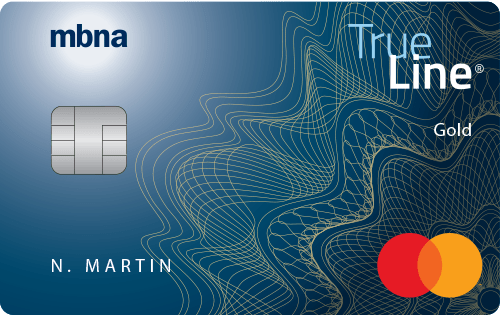
4.0
Best low interest credit card: MBNA True Line Gold
Low, everyday rate, introductory APR on transfers, no annual fee.

Scotiabank Value® Visa* Card
4.0
Scotiabank Value® Visa* Card
4.0
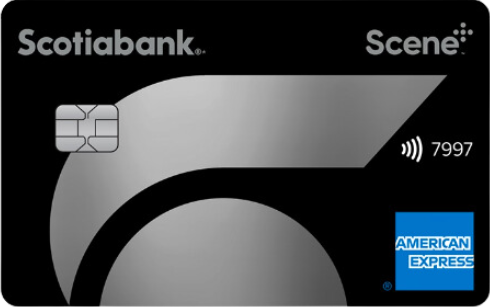
Scotiabank Platinum American Express® Card
4.4
Scotiabank Platinum American Express® Card
4.4
One of the best travel rewards cards with a low 9.99% interest rate
Why it wins for best low interest rate card

 Great low rate everyday
Great low rate everyday
- The MBNA annual percentage rate (APR) is a low 12.99% for purchases.
 Fees
Fees
- Annual fee: $39
- Foreign transaction fee: 2.5% of the transaction in CDN
 APR
APR
- Purchase APR: 10.99%
- Balance transfer APR: 13.99%
- Cash back APR: 24.99%
 Disclosures
Disclosures
†, ✪, Terms and Conditions apply.
This offer is not available for residents of Quebec. For residents of Quebec, please click here.
Sponsored advertising. MBNA is a division of The Toronto-Dominion Bank (TD) and TD is not responsible for the contents of this site including any editorials or reviews that may appear on this site. For complete information on this MBNA credit card, please click on the “Apply Now” button.
The Toronto-Dominion Bank is the issuer of this credit card. MBNA is a division of The Toronto-Dominion Bank. ®MBNA and other-trademarks are the property of The Toronto-Dominion Bank.
- Overall
- Rewards
- Cash Back
- Balance Transfer
- No Annual Fee
- Low Interest
- Grocery
- Gas
- Travel
- Welcome Bonus
- Student

4.9
Best credit card for groceries: BMO CashBack® World Elite®* Mastercard®*
Canada's highest earn rate on groceries, a big welcome offer, and first year waived.

CIBC Dividend® Visa Infinite* Card
4.1
CIBC Dividend® Visa Infinite* Card
4.1
Maximize your cashback potential with a card that rewards your everyday spending. Explore the perks and benefits of the CIBC Dividend Visa Infinite today!
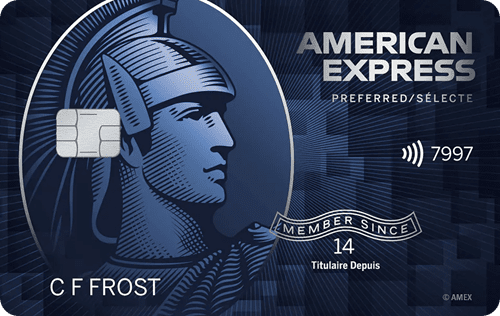
SimplyCash® Preferred Card
4.0
SimplyCash® Preferred Card
4.0
Why it wins for best grocery store card
- High cash back rates on groceries: Earn 5% cash back on groceries
- Lucrative sign-up bonus: Get up to 10% cash back in your first 3 months and the $120 annual fee waived in the first anniversary*
The BMO CashBack® World Elite®* Mastercard®* is our pick for the very best cash back credit card in Canada, but it might not make sense for everyone because of its steep income requirements.

 Generous earn rates
Generous earn rates
- Earn 3% (up to a monthly max of $500) cash back on groceries.
- Earn 1% (up to $500 per month) on any recurring bill payments*.
- Earn 0.50% cash back on all other purchases.
 Discounts
Discounts
- Get up to seven cents off per litre on Shell fuel®.
- Save up to 20% on National Car Rental®†† and Alamo Rent A Car®†† and up to 5% on Enterprise Rent-A-Car®†† at locations worldwide using BMO's Car Rental Booking tool.
- Complimentary Roadside Assistance Program
 Comprehensive insurance
Comprehensive insurance
- Extensive travel protections like emergency travel medical, delayed and lost baggage, flight delay, common carrier travel accident protection and more
 Fees
Fees
- Annual fee: $120 (annual fee waived in the first year*)
- Foreign transaction fee: 2.5% of the transaction in CDN
 APR
APR
- Purchase APR: 20.99%
- Balance transfer APR: 23.99%
- Cash advance APR: 23.99% (21.99% for Quebec residents)
 Disclosures
Disclosures

CIBC Dividend® Visa Infinite* Card
4.1
CIBC Dividend® Visa Infinite* Card
4.1
Maximize your cashback potential with a card that rewards your everyday spending. Explore the perks and benefits of the CIBC Dividend Visa Infinite today!
- Overall
- Rewards
- Cash Back
- Balance Transfer
- No Annual Fee
- Low Interest
- Grocery
- Gas
- Travel
- Welcome Bonus
- Student

4.9
Best credit card for gas: BMO CashBack World Elite
Solid rewards on gas, discounts at the pump, complimentary Roadside Assistance.

Scotiabank Gold American Express®
4.8
Scotiabank Gold American Express®
4.8
Earn more on groceries, dining, and entertainment with no foreign transaction fees.

CIBC Dividend® Visa Infinite* Card
4.1
CIBC Dividend® Visa Infinite* Card
4.1
Maximize your cashback potential with a card that rewards your everyday spending. Explore the perks and benefits of the CIBC Dividend Visa Infinite today!
Why it wins for best gas card

 Lucrative earn rates
Lucrative earn rates
- Earn 3% (up to a monthly max of $500) cash back on groceries.
- Earn 1% (up to $500 per month) on any recurring bill payments*.
- Cardholders can earn 0.5% (no monthly max) on all other eligible purchases*
 Discounts
Discounts
- Get up to seven cents off per litre on Shell fuel®.
- Get up to 20% off on National Car Rental®†† and Alamo Rent A Car®††
- Complimentary Roadside Assistance Program
 Fees
Fees
- Annual fee: $120 (annual fee waived in the first year*)
- Foreign transaction fee: 2.5% of the transaction in CDN
 APR
APR
- Purchase APR: 20.99%
- Balance transfer APR: 23.99%
- Cash advance APR: 23.99% (21.99% for Quebec residents)
 Disclosures
Disclosures

Scotiabank Gold American Express®
4.8
Scotiabank Gold American Express®
4.8
Earn more on groceries, dining, and entertainment with no foreign transaction fees.
- Overall
- Rewards
- Cash Back
- Balance Transfer
- No Annual Fee
- Low Interest
- Grocery
- Gas
- Travel
- Welcome Bonus
- Student
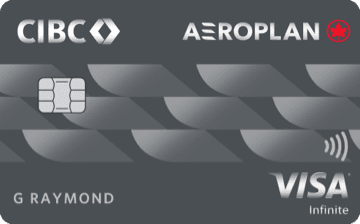
4.5
Best credit card for travel: CIBC Aeroplan® Visa Infinite*
Accelerated rewards, premium travel benefits, comprehensive insurance.

Scotiabank Platinum American Express® Card
4.4
Scotiabank Platinum American Express® Card
4.4
One of the best travel rewards cards with a low 9.99% interest rate

CIBC Aventura® Gold Visa* Card
4.9
CIBC Aventura® Gold Visa* Card
4.9
Unlock a world of rewards and travel possibilities with a card designed for your lifestyle (and minimum income requirements)
Why it wins for best travel card
- Great for Air Canada Flyers: Maximize points on Air Canada purchases and frequent travel categories.
- Generous Welcome Bonus: Get up to 30,000 Aeroplan points in your first year.
- Travel Insurance: Extensive coverage for flight delays, baggage, medical emergencies, trip cancellations, auto rentals, and more.

 Impressive earn rate
Impressive earn rate
- Earn 1.5 Aeroplan points on eligible gas, electric vehicle charging, groceries and with Air Canada directly, including through Air Canada Vacations®†
- Earn 1 Aeroplan point on all other purchases†
- Earn points twice at over 150 Aeroplan partners and more than 170 online retailers through the Aeroplan eStore
 Aeroplan perks
Aeroplan perks
- Free first checked bag for 2 travellers, one-time annual fee rebate†,
- Primary cardholders can often book flight rewards for even fewer points
- Plus, no additional airline surcharges on flight rewards with Air Canada flights
 4th night free
4th night free
- Get an extra night free for every 3 hotel nights redeemed with Aeroplan points.
 Fees
Fees
- Annual fee: $139 (Free with CIBC Smart Plus™ Account. $50 for each additional card (up to 3).)
- Foreign transaction fee: 2.5% of the transaction in CDN
- Balance transfer fee: 1% of the balance transferred
- Cash advance fee: $5 (Outside Canada $7.50 for each Cash Advance.**)
 APR
APR
- Purchase APR: 20.99% (non-Quebec residents†)
- Balance transfer APR: 22.99% (21.99% for Quebec residents)
- Cash advance APR: 22.99% (21.99% for Quebec residents)
 Disclosures
Disclosures
- this offer must have been directly communicated to you from CIBC or from a partner/affiliate; and
- you must apply for the eligible card through the link provided in the CIBC or partner/affiliate communication to you.†

Scotiabank Platinum American Express® Card
4.4
Scotiabank Platinum American Express® Card
4.4
One of the best travel rewards cards with a low 9.99% interest rate
- Overall
- Rewards
- Cash Back
- Balance Transfer
- No Annual Fee
- Low Interest
- Grocery
- Gas
- Travel
- Welcome Bonus
- Student

4.0
Best credit card welcome bonus: TD® Aeroplan® Visa Infinite Privilege*
Earn up to $2,900 in value† in your first year plus premium travel benefits.

Scotiabank Platinum American Express® Card
4.4
Scotiabank Platinum American Express® Card
4.4
One of the best travel rewards cards with a low 9.99% interest rate
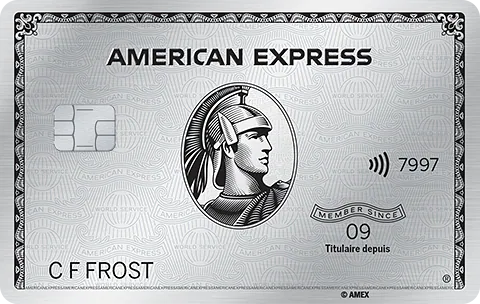
The Platinum Card
3.5
The Platinum Card
3.5
A high annual fee card with all the luxury perks to balance it out.
Why it wins for best welcome bonus card

 Impressive points
Impressive points
- Earn 2 points† for every $1 spent on eligible purchases made direct through Air Canada® purchases (including Air Canada Vacations®)
- Earn 1.5 points† for every $1 spent on eligible gas, grocery, travel and dining purchases
- Earn 1.25 points† for every $1 spent on all other purchases made with your Card
- Earn points twice when you pay with your Card and provide your Aeroplan number at over 150 Aeroplan partner brands and at 170+ online retailers via the Aeroplan eStore (www.aeroplan.com/estore)
 Travel perks
Travel perks
- Enroll for NEXUS and once every 48 months get an application fee rebate† (up to $100 value)
- Complimentary Maple Leaf Lounges† access and 6 worldwide lounge visits annually†
- Free checked bags on Air Canada
- Preferred Pricing on Aeroplan® flight rewards
- Priority Airport Services† like Boarding and Baggage Handling
 Comprehensive travel insurance
Comprehensive travel insurance
- Includes travel medical, travel accident, trip cancellation/interruption, lost/stolen baggage, hotel and rental car insurance
 Fees
Fees
- Annual fee: $599 (Additional Cardholder† $199)
- Foreign transaction fee: 2.5% of the transaction in CND
 APR
APR
- Purchase APR: 20.99
- Cash advance APR: 22.99
 Disclosures
Disclosures
This offer is not available for residents of Quebec. For Quebec residents, please click here.
The Toronto-Dominion Bank (TD) is not responsible for the contents of this site including any editorials or reviews that may appear on this site. For complete and current information on any TD product, please click the Apply Now button. Sponsored Content.
†Terms and conditions apply.

Scotiabank Platinum American Express® Card
4.4
Scotiabank Platinum American Express® Card
4.4
One of the best travel rewards cards with a low 9.99% interest rate
- Overall
- Rewards
- Cash Back
- Balance Transfer
- No Annual Fee
- Low Interest
- Grocery
- Gas
- Travel
- Welcome Bonus
- Student
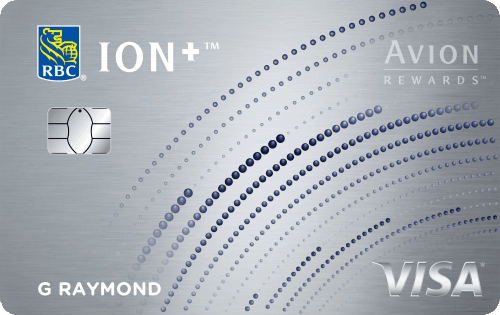
3.2
Best credit card for students: RBC ION+ Visa
Points on food, groceries, gas, rideshares, streaming and more.
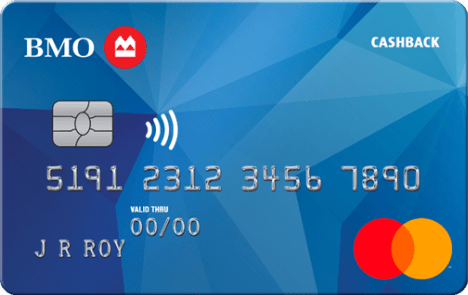
BMO CashBack® Mastercard®* for students
4.2
BMO CashBack® Mastercard®* for students
4.2
A student cashback credit card with good earn rates on groceries and recurring bills

Tangerine Money-Back Credit Card
4.0
Tangerine Money-Back Credit Card
4.0
A no annual fee 2% cash back card personalized to your shopping habits.
Why it wins for best student card
- Generous welcome offer
- High earn rate where it matters for students
- No annual fee

 Points in key student categories
Points in key student categories
- Earn 3 Avion Ion points† per $1 on qualifying grocery, dining, food delivery, gas, rideshare, public transit, EV charging, streaming, digital gaming and online subscriptions
- Earn 1 Avion Ion point per $1 on all other purchases
- Earn 50 Be Well points for every $1 spent on eligible purchases at Rexall when you pay with your linked RBC card and scan your Be Well card
 Mobile phone insurance
Mobile phone insurance
- Up to $1,000 in mobile device insurance
 Fuel discount
Fuel discount
- Save 3¢/L on fuel and earn 20% more points when you pay with a linked RBC card
 Fees
Fees
- Annual fee: $48 (billed as $4 per month)
- Foreign transaction fee: 2.5% of the transaction in CDN
 APR
APR
- Purchase APR: 20.99%
- Balance transfer APR: 22.99%
- Cash advance APR: 22.99% (21.99% for residents of Quebec)
 Disclosures
Disclosures
Refer to RBC page for up to date offer terms and conditions.
This post contains affiliate links. Please read disclaimer for more info.
Disclaimer: Money.ca may engage in affiliate marketing, which is done by embedding tracking links into Money.ca. If you click on a link for an affiliate partnership, a cookie will be placed on your browser to track any sales for purposes of commissions.

BMO CashBack® Mastercard®* for students
4.2
BMO CashBack® Mastercard®* for students
4.2
A student cashback credit card with good earn rates on groceries and recurring bills
Why you can trust Money.ca's best credit cards in Canada list
Money.ca rates all credit cards on a numeric scale of 1 to 5 stars, with 1 being the lowest and 5 the highest rating, respectively. Money.ca’s proprietary scoring formulas break down the confusing language, complex points, rewards and earn rates to give you the real data that caters to your needs first, not ours.
Our partnerships have no impact on our ratings, which are solely determined by the merits of each card. To learn more about how we researched and ranked these cards, read our full credit card review methodology.
Pros and cons of credit cards
Pros
-
Rewards: Many credit cards come with rewards in the form of cash back, points or miles. These rewards can be extremely lucrative when booking award flights or hotel stays with partner brands.
-
Welcome bonuses: Some credit cards come with welcome bonuses that can be worth up to $2,000 or more in value for new accounts. These welcome bonuses require a minimum spend but can easily offset the annual fee in some instances.
-
Convenience and security: Credit cards are widely accepted across Canada and for online purchases and offer better fraud protection compared to cash or debit cards
Cons
-
Annual fees: Many Canadian credit cards charge an annual fee. These fees can offset the benefits if you're not maximizing the card's rewards.
-
Impact on credit: Using a credit card can negatively impact your credit should you forget to make your payments or keep a balance that's too high.
-
Potential for debt: Easy access to credit can lead to overspending and accumulating debt.
Tips for choosing the best credit card for your needs
As you can probably guess from the fact that we’ve chosen 20 different credit cards just for this list, there are a lot of different types of credit cards. On the surface, credit cards all serve the same purpose of giving us an easy way to spend money and borrow. But when you get down to the details, different cards can help borrowers achieve very different end goals.
Take a look at the seven main categories of cards.
Rewards credit cards
Rewards cards pay you in some way when you spend. This can be in the form of cash back, travel, or points. Redemption options and earnings rates will vary by card, but the general idea is that you’re earning something on some or all of your spending. Rewards cards often earn the most rewards in a certain category such as groceries or travel.
Branded credit cards
Branded credit cards are offered by credit card issuers in partnership with other corporations such as retailers, airlines, or hotels. These typically earn the most rewards for loyalty programs specific to the associated brand and may also offer perks like preferred bookings, discounts, or priority treatment.
Student and beginner credit cards
Credit card issuers for student and starter cards don’t expect to see applicants with polished, well-rounded credit histories and shiny credit scores. There’s definitely a time and a place for starter cards. College students, new immigrants to Canada, and people rebuilding after bankruptcy are just a few examples of those who might benefit from these cards.
Balance transfer cards
Balance transfer credit cards are different from your typical credit card. They’re not meant to replace your other cards but rather provide a vehicle for debt repayment. By transferring multiple card balances to one single balance transfer credit card, you can save on interest and make your life easier as you work to pay back what you owe. These cards often offer promotional 0% APRs for a set number of months from account opening so you don’t have to start paying interest right away.
Low-interest credit cards
Like a balance transfer credit card, a low-interest credit card is designed to give you a break. But rather than a low introductory rate, these have regular APRs that are lower than comparable cards so that when you do carry a balance, you won’t owe as much interest in the long run. These can be smart for people who struggle with debt and overspending.
What are the most popular credit cards networks in Canada
The most favoured credit cards vary depending on the type, such as travel rewards, cashback offers, or low-fee options. Recent insights from YouGov categorize the top cards by their payment networks, including Visa and Mastercard, with an additional analysis by age group to assist you in choosing the most suitable option for those within your age bracket.
For younger demographics, specifically ages 18-24 and 25-35, Visa emerges as the preferred provider, capturing 33% and 41% of the market share in these age groups, respectively. In contrast, Mastercard holds a 16% and 27% share for the same age ranges. Conversely, among the older population (55 and over), Mastercard leads with a 37% market share, surpassing Visa's 33%. When considering all age groups combined, both payment networks maintain nearly equal market shares, with Mastercard at 33.44% and Visa slightly ahead at 34.4%.
Which credit card should I get? 5 ways to compare the best credit cards in Canada
When choosing the right credit card for you, you should be mindful of the good and the bad. Try to look into all of the following details when comparing your options. Or you can use the new Money.ca Canadian credit card comparison tool which uses feature filters, extensive research and more than 70 data points to compare 100 of the best credit cards in Canada.
Credit card fees
Any fees your card has will eat into your rewards earning – and budget. This is why it’s important to be mindful of annual fees, foreign transaction fees, and more when thinking about signing up for a card.
But free isn’t always better. Often, great cards are worth paying for. A card’s value can easily cancel out an annual fee in just a month or two if it includes a variety of statement credits, discounts, and perks. Consider what fees you’re willing to pay for the benefits of having a particular card.
Read more: Why Pay for a Credit Card with an Annual Fee?
Credit card rewards
One of the most significant features of any reward/cash-back card is how fast and easy it is to earn rewards/cash. Overall, the higher the earn rate, the better.
However, to really understand a card’s value, it’s essential to know what points are actually worth in real-world terms as well as how easy they are to use. Flexible redemption is almost always more important than higher rates. Bonus points (sorry) if rewards can be transferred to other programs.
Credit card perks
Cards can offer a wide variety of perks. Often, the type of card dictates what types of perks you may get. For example, a card that earns travel rewards may include complimentary travel insurance. Low-interest credit cards may include purchase protection.
Whenever you get to the perks section of a card’s sales page, you should think as realistically as possible. Sure free stuff is nice, but which perks are you actually going to use and which ones are you going to forget you have? Which ones do you already pay for that you could save money on and which ones would you never pay for but use if you had them for free?
Examples of credit card perks include:
- Extended warranties
- Insurance (e.g. travel interruption insurance)
- Emergency assistance services (e.g. roadside dispatch)
- Airport lounge access
- Free checked bags
- Hotel upgrades
- Early/Late check-in
- Concierge services
Credit card interest
APRs are a huge factor for any kind of credit card, especially for people who don’t pay off their balance in full each statement period. Pay close attention to how much interest you might pay if you carry a balance, make a balance transfer, request a cash advance, or miss a due date on your card payment.
Credit card sign-up bonuses
The bigger the welcome bonus, the better. But we generally favour substance over flash, and we’re critical of cards that won’t deliver repeated value over time. Even the best credit card sign-up bonus won’t make a mediocre card worth signing up for, so don’t sign up for a card to get a bonus unless you would sign up if it didn’t have that bonus too.
Read more: Best credit card offers
What's the best credit card company (or what you need to know about credit card customer service)
When selecting the best credit card, it's crucial to evaluate the quality of customer service, which encompasses the ease of accessing support and the variety of contact methods available. As we reflect on our own experiences at Money.ca, customer service and hold times are critically important. When we ask some of our writers about their best and most frustrating moments, long wait times is a consistent theme.
To shore up our best credit card rankings, we charted J.D. Power’s Canada Credit Card Satisfaction Studies from 2018, 2019, 2020, 2021, 2022, 2023 and 2024. In addition to some credit card issuers consistently performing better than others, like Tangerine, 2023 highlights a declining trend in customer satisfaction across Canadian issuers.
If customer satisfaction was the only determining factor, the best credit card issuers in Canada would continually be Tangerine, Canadian Tire Financial, and PC Financial. Traditional issuers like RBC credit cards and BMO credit cards consistently rank in the middle or the bottom with MBNA bringing up the rear.
Summary
Canadian credit cards come in many different shapes and sizes. Okay, so they’re all pretty much the same shape and size, but they’re really varied in terms of what they require, what they offer, and who they’re best for.
If you’re searching for your next credit card or your very first one, be sure to give yourself plenty of time to make the decision. Finding the right card for you is well worth it.
Disclosures
BMO is not responsible for maintaining the content on this site. Please click on the Apply now link for the most up to date information.
The Toronto-Dominion Bank (TD) is not responsible for the contents of this site including any editorials or reviews that may appear on this site. For complete and current information on any TD product, please click the Apply Now button.
American Express is not responsible for maintaining or monitoring the accuracy of information on this website. For full details and current product information, click the Apply Now link. If you apply and get approved for an American Express Card, (I/we) may receive compensation from American Express, which can be in the form of monetary payment
FAQs about the best Canadian credit cards

Lauren Graves is a writer and editor specializing in finance writing and education.

Tyler Wade has worked in personal finance for over 5 years writing for brands like Ratehub, Forbes, KOHO, and now Money.ca.
Explore the latest articles

CRTC to help Canadians pay less on roaming charges
Customers often pay $10 to $16 per day regardless of cell phone usage
Disclaimer
The content provided on Money.ca is information to help users become financially literate. It is neither tax nor legal advice, is not intended to be relied upon as a forecast, research or investment advice, and is not a recommendation, offer or solicitation to buy or sell any securities or to adopt any investment strategy. Tax, investment and all other decisions should be made, as appropriate, only with guidance from a qualified professional. We make no representation or warranty of any kind, either express or implied, with respect to the data provided, the timeliness thereof, the results to be obtained by the use thereof or any other matter. Advertisers are not responsible for the content of this site, including any editorials or reviews that may appear on this site. For complete and current information on any advertiser product, please visit their website.